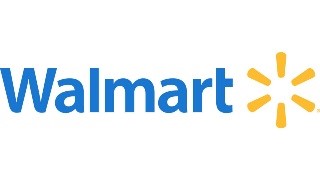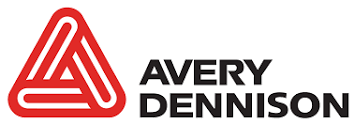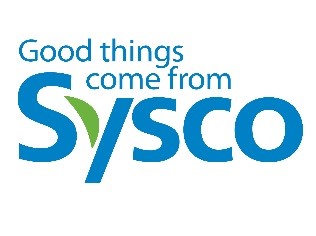Recency Bias
After two seemingly polar-opposite quarters, one thing not in short supply is the number and diversity of market commentaries and outlooks going into 2019. Through February, the U.S. stock market had its best first two months of the year since 1991 amid mixed economic news following the worst December since the dramatic days of 1931. The increase in volatility comes after a long period of ever-increasing valuations and steadily advancing markets. Many investors have become accustomed to the robust valuations and low volatility of an almost decade-long bull market. The sudden sharp volatility of a potential new “normal” calls for perspective, particularly for investors who feel nervous and compelled to act during such stress points.
The duration of this bull market has the potential to cause investors to make the wrong decisions, vis-a-vis their portfolios, when volatility reappears after a long hiatus. As we approach the 10th anniversary of the second longest bull market in modern times, the phenomenon known as “recency bias” can be a dangerous trait for investors. “Recency bias” is a cognitive condition that lulls us into believing what has happened in the recent past will continue for the foreseeable future. Investors continuously fall victim to this bias during both positive and negative market cycles.
Our brains are conditioned in such a way that recent memories are more easily recalled. Thus, it is completely reasonable to think the market will perform well when we’re in a bull market, even though most investors are cognizant of the cyclical nature of the stock market. Alternatively, when the market turns negative, we may be inclined to think that these conditions will persist and reactively liquidate stock positions. Obviously, selling low is not a good long-term investing strategy. Markets recover and invariably those who have sold are likely to be still sitting on the sidelines.
Multiple studies (from Sharp in 1991 to French in 2008) find an inverse relationship between performance and frequency in trading, with high portfolio turnover associated with poor performance. High turnover also leads to more transaction costs and a higher capital gains tax burden.
Market professionals are hardly resistant to “recency bias” as well. At the beginning of 2008, trouble signs were beginning to emerge in the global economy. But after five years of positive returns, the attitude among analysts was bullish, with Wall Street consensus calling for an 11% plus gain. Their assessment was supported by an analysis of the recent past. Despite the forecasts, the economy turned south, and we entered one of the most negative periods for financial markets since the Great Depression.
What is the best antidote to counteracting “recency bias” and resisting excessive pessimism or excessive optimism undermining performance? Our approach is to maintain our investment discipline through market cycles, good or bad, and act when market value significantly diverges from the underlying economic value. Focusing on individual valuations can reduce the danger of overemphasizing short-term economic and market noise or continual shifts in economic policies. A good example on the fickleness of policy making is the recent about-face of the Federal Reserve toward reducing the size of its balance sheet.
The Federal Reserve announced plans in September 2017 to begin shrinking its $4.5 trillion balance sheet. The Fed’s assets had swelled during the previous decade as it engaged in “quantitative easing” to ease the effects of the Great Recession. With the economy recovering, it planned to shrink its balance sheet to pre-recession levels along with gradually increasing interest rates. The Fed started slowly, decreasing assets $10 billion a month and over the next few months picked up its pace. By October 2018 it was reducing assets $50 billion a month in addition to having raised short-term interest rates three times during the year. The Fed’s actions touched off a bout of extreme market turbulence. The S&P 500 was off 14% in the final three months of 2018. Faced with that reaction, the Fed abruptly backed off from its plan to raise interest rates and aggressively shrink its balance sheet.
Short-term economic news and data always have the potential to propel or depress the market in quick succession. When the market does turn, any moves one makes should be driven by a long-term perspective and plan rather than the psychological extrapolation of current market conditions and sentiments. At Delta, we believe investing is best done as a long-term pursuit, focusing on the merits and valuation of individual stocks, as opposed to reacting to constantly changing economic news and policies. The risks that are the topic du jour of the financial media tend to be priced in the market quite efficiently. The real challenge – and value to investors – is to identify individual companies that can survive and prosper in varying market cycles and continue to allocate capital in ways that sustain their competitive advantages.
March 15, 2019
Company Comments
Comments follow regarding common stocks of interest to clients with stock portfolios managed by Delta Asset Management. This commentary is not a recommendation to purchase or sell but a summary of Delta’s review during the quarter.
Walmart Inc. { WMT }
Founded in 1962, Walmart began with a single store in Rodgers, AR. Today it has grown to more than 11,700 retail stores in 28 countries serving more than 270 million customers per week. The company is the world’s largest retailer operating in a variety of formats, including discount stores, neighborhood markets, super centers and grocery stores. Walmart, with $500 billion in annual sales, possesses tremendous scale and leverage to extract the most favorable terms possible from suppliers and vendors. The company is very adept at using its cost advantage to maintain low price leadership and keep constant pressure on competitors.
The company is fully committed to becoming a major eCommerce player. In 2018, the company’s domestic U.S. eCommerce sales grew at 44% and represented 5% of Walmart’s total U.S. sales. Walmart’s eCommerce share is growing in part due to the flexibility of sales online being fulfilled via shipment and store pickup. Walmart now offers free shipping on purchases of $35 or more on thousands of items. Currently about half of Walmart’s online orders are picked up by customers at stores or shipped from stores.
In response to the expanding competitive challenges, Walmart has begun an aggressive investment program after years of underinvesting in eCommerce and over-engineering cost reductions in its core business. Earlier this year, the company increased the starting wage for U.S. associates to $11 per hour and expanded maternity and parental leave for salaried and hourly associates. These changes should reduce turnover and allow greater staffing within departments to improve customer service.
The company is redesigning stores with a standard of CFF (Clean, Fast & Friendly). Almost all of its U.S. stores achieved this designation by 2018, up from just 16% at the beginning of 2015. Recently introduced store pickup in grocery continues to be a priority. The company expects to offer the service in 2,100 stores by the end of 2019. Store managers are using new analytical data to decide which products stay on shelves and where to remove clutter. Employees also are starting to re-stock during the day, when customers are most likely to notice missing items, rather than late at night.
The company’s international strategy is centered on increasing penetration in its existing markets and entering new, emerging markets. Walmart acquires local retail chains and then improves its operating efficiency to enable the company to reduce pricing and drive sales volumes. The International Division’s limited scale results in less efficiency with lower profitability than its U.S. operations. Operating internationally also can be more challenging than domestically as the company adjusts to different cultures, laws and varying degrees of economic development. However, we believe international expansion remains a viable growth alternative for Walmart.
Overall, we expect Walmart’s growth will be less than its historical average due to the large size of the store base, full penetration of the domestic market and more intense competition. Walmart’s improved U.S. distribution and better inventory management should allow it to generate average cash flow margins of over 6%. Based on these and other assumptions, our stock valuation model indicates Walmart’s current stock price offers a long-term annual rate of return in excess of 7.5%.
The Procter & Gamble Company { PG }
Since its founding in 1837 by William Procter and James Gamble, P&G has grown to be the world’s largest and most profitable consumer products company with almost $69 billion in sales and $14 billion in operating profit. Procter & Gamble sells its products in more than 180 countries and territories. The company’s diversified portfolio of branded products includes major brands, such as Tide, Oral-B, Crest, Gillette, Pampers and Olay. P&G has built or acquired a portfolio of 21 brands, each of which generates between $1 billion and nearly $10 billion in revenue yearly. P&G has three times more billion-dollar brands than its next largest competitor and more than most of its remaining competitors combined.
P&G’s success has been built on a long-standing business model: Discover meaningful consumer insights as to their needs and wants through deep consumer research and understanding; translate those insights into product innovation; and create compelling marketing and advertising to convince consumers of the superior performance and value of P&G products. P&G’s brands often hold top market share positions in their respective categories. Its sheer size confers economies of scale benefits in manufacturing and distribution, giving it a strong bargaining position versus its retailers.
P&G is coming off a major five-year transformation that has led to a 70% reduction in brands and $10 billion in cost savings. The company experienced improving execution and market share trends in seven of 10 global product categories throughout 2018. Management is now focusing on using part of its improved cash flow to increase innovation and marketing spend on core brands to accelerate organic growth. Innovation and a more disciplined emerging market expansion strategy will continue to be a driving force behind P&G’s long-term growth outlook.
Global eCommerce sales are improving and were up 30% in 2018 and accounted for nearly $4.5 billion of sales – about 7% of total business. P&G has built eCommerce value share in eight of its 10 product categories. Capital spending is running between 5% to 5.5% of sales. P&G is expanding capacity internationally, particularly in emerging markets with 20 new manufacturing facilities. P&G spending on R&D in fiscal 2018 was $1.9 billion or 2.8% of sales. The company employs more than 1,000 PhDs among the 8,000 employees at its 26 innovation centers around the world.
P&G’s largest potential risk is its exposure to rising commodity costs. If combined with lower shelf prices, rising commodity costs can cut significantly into margins. P&G has significant market share and usually controls one of the top spots in most categories and segments in which it competes; however, the company does face strong competition from branded and store-brand offerings. These competitors have at times been very aggressive in discounting and in promotional activity. P&G realizes the need to defend its market share and has been more aggressive in its pricing adjustments and promotional activity in its major categories and geographic markets.
Given P&G’s concentration in mature markets and increasing exposure to faster-growing developing markets, we have assumed the company can generate operating margins of approximately 20% over the next decade. Based on these assumptions, our stock valuation model indicates P&G’s current stock price offers a long-term average annual rate of return of approximately 5%.
Avery Dennison Corporation { AVY }
Avery Dennison is the leading manufacturer of pressure-sensitive labeling materials. The company is also one of the world’s largest producers of retail apparel ticketing and branding systems, radio frequency identification (RFID) inlays and specialty tapes. Avery has a significant global presence with approximately 200 manufacturing and distribution facilities in 50 countries and product sales in 89 countries. Nearly 75% of revenue is derived from international markets, including emerging markets.
The company maintains a dominant market share position in its two main businesses: pressure-sensitive materials, and retail branding and information solutions. Avery’s specialization, superior product offerings and effective customer service should continue to strengthen its relationships in these businesses. Although both business segments have reached maturity in developed markets with pockets of excess growth remaining in specialty labels, Avery continues to grow its already significant international presence, particularly in Asia. Long-term, these economies should continue to expand, and the demand for packaged goods and apparel will likewise expand. In addition to adding new regional partnerships, Avery grows as its multi-national customers spread into new, faster growing regions.
Avery’s size affords it a manufacturing scale advantage. The firm’s extensive global distribution network and customer relationships further strengthen its advantages over its competition, particularly with large consumer products manufacturers such as P&G. These relationships can be “sticky” due to the tailored servicing involved. Meeting specific customer specifications and formats increases switching costs.
Pressure-sensitive materials is Avery’s most important business segment and contributes nearly 75% of company profits. Avery is more than twice the size of its nearest competitor. The company’s manufacturing scale enables Avery to obtain operating efficiencies that generate a premium profit margin over its competitors. Further, its multi-year operating improvement plan continues to grow company profitability. The company’s technical and engineering expertise has led to innovative new products, such as clear film labels and thinner, more flexible labels that conform to oddly-shaped consumer packages and bottles. These specialty labels are a faster growing segment of the market with premium operating margins. This technology is important to consumer products manufacturers for brand awareness and product appeal on the shelf. In addition, we expect Avery will continue to benefit from the growing acceptance of RFID tags, which make up a small but rapidly growing part of its revenue.
Given Avery’s concentration in mature markets and its increasing market share in faster-growing emerging markets, we have assumed the company can grow revenue approximately 3.5% annually over the next decade. At this pace, given the company’s operating efficiencies partially mitigated by competitive pressures, we believe cash flow margin can average approximately 12.5% during this period. With the recent appreciation in the stock price, we’ve trimmed our position. Based on these assumptions, our stock valuation model indicates Avery’s current price offers a long-term average annual rate of return approximately 5%.
Sysco Corporation { SYY }
Founded in 1969, Houston-based Sysco is the largest food service marketing and distribution company in North America. Sysco’s major customers include independent restaurants as well as schools, colleges, hotels, hospitals and other food service outlets. Sysco holds about a 17% market share – two times its largest competitor – in the $250-billion-plus food service industry in the U.S. and Canada.
Sysco targets full service, independent restaurant operators, and the company has a nearly 30% market share among this group. Sysco focuses on independent restaurants where it has a relatively higher degree of pricing power versus chain restaurants. Historically, Sysco has been able to pass along inflation adjustments without significant delays. Key drivers in the industry include prompt and accurate delivery of orders, competitive pricing, close contact with customers and the ability to provide a full array of products and services to assist clients in their food service operations. Sysco’s distribution network and scale is a competitive advantage in an industry with high fixed costs, helping the company generate industry leading returns on invested capital.
Sysco has the largest marketing and sales organization within the food service industry, which is a key differentiator. The company advises clients on how they can drive sales and minimize costs. Sysco specializes in assessing business operations and providing its customers with a range of ancillary services, such as menu planning advice, food safety training, inventory control, product usage and labor scheduling reports. These services establish a level of trust and dependence and give Sysco valuable information relating to extensions of customer credit and accounts receivable management.
Sysco has heavily penetrated the mature U.S. restaurant industry. The company’s primary revenue growth will be driven by acquisitions. Sysco’s size and free cash flow will allow it to continue to be a consolidator in a fragmented industry. Acquisitions will primarily focus on product extensions in the U.S. as well as geographic expansion to position Sysco to sell additional products to new and existing customers. In addition to acquisitions, and barring a protracted recession, Sysco should continue to benefit from secular trends, such as growth in favor of away-from-home eating occasions, and independent restaurants continuing to take share from chains.
Growing largely through acquisitions, Sysco retained a decentralized, entrepreneurial culture that gave wide autonomy to the individual distribution centers. Sysco’s profitability has been trending upward since it discarded its major consolidation and operating systems software overhaul effort. However, where economically feasible, the company has continued to further consolidate procurement, streamline its distribution, increase sales productivity, improve customer service and streamline the order fulfillment process. Management expects to save an additional $650 to $700 million annually to reinvest in revenue growth and improved profitability.
Despite its industry dominance, Sysco faces some challenges. The industry is highly fragmented and competitive. In addition to local and regional distributors, competition increasingly includes cash-and-carry wholesalers, such as Restaurant Depot, club stores and a growing prevalence of group purchasing organizations. As an industry consolidator, there is always the risk that Sysco will overpay for acquisitions and be unable to profitably integrate these new companies.
We estimate that Sysco will be able to grow revenues long-term at a low single digit rate versus an industry growth rate that is only marginally positive. The company should be able to produce operating margins averaging in the mid-single digits, with those margins trending higher over time. Using these assumptions, our stock valuation model indicates Sysco’s current stock price offers a long-term annual average rate of return of approximately 6%.
For a PDF version of this article please click here.
Dated: March 15, 2019
Specific securities were included for illustrative purposes based upon a summary of our review during the most recent quarter. Individual portfolios will vary in their holdings over time in relation to others. Information on other individual holdings is available upon request. The information contained herein has been obtained from sources believed to be reliable but cannot be guaranteed for accuracy. The opinions expressed are subject to change from time to time and do not constitute a recommendation to purchase or sell any security nor to engage in any particular investment strategy. Any projections are hypothetical in nature, do not reflect actual investment results and are not a guarantee of future results and are based upon certain assumptions subject to change as well as market conditions. Actual results may also vary to a material degree due to external factors beyond the scope and control of the projections and assumptions.






